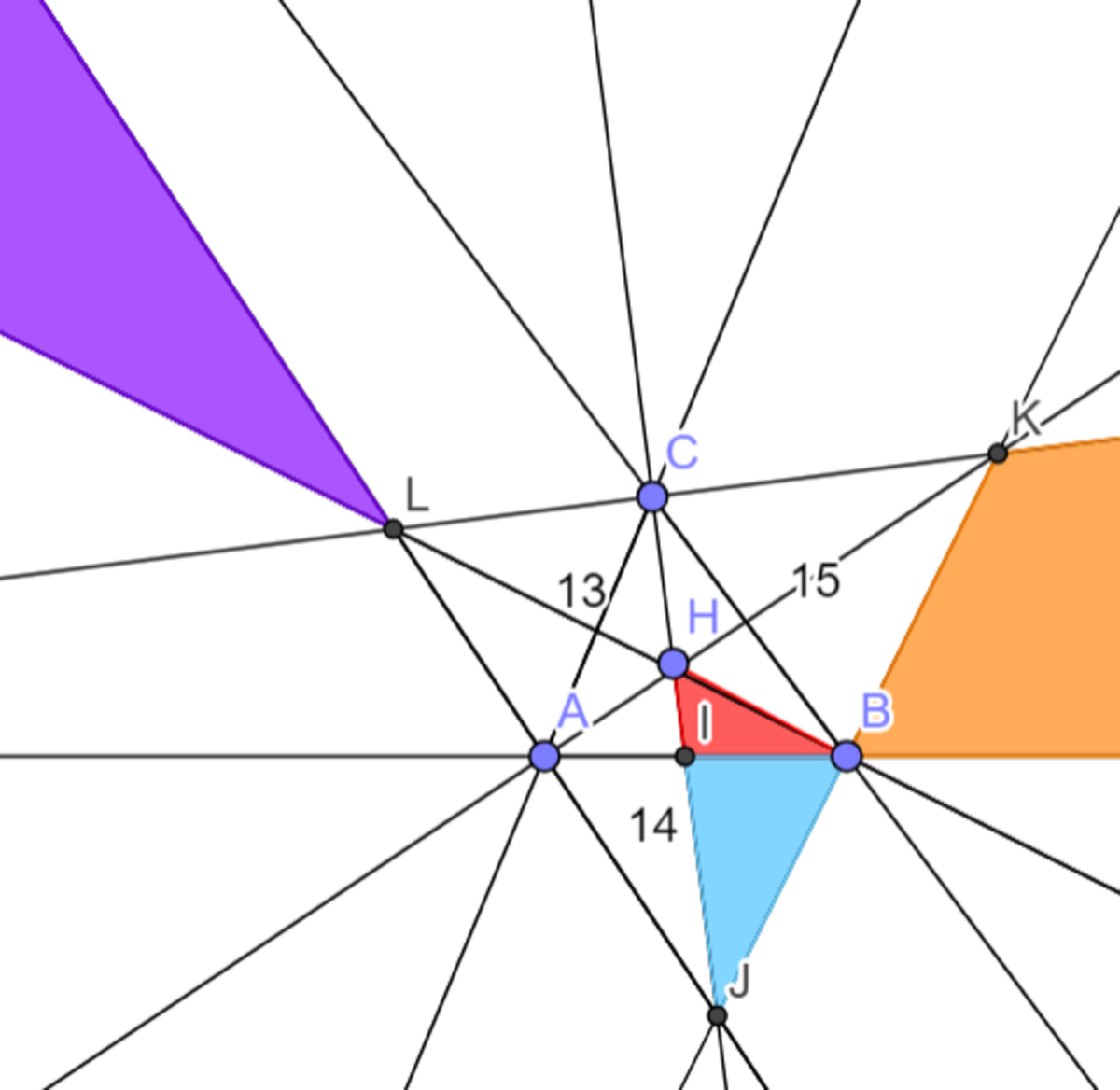Hunt for that Region!
As shown, in
Let denote the perpendicular distance from point to line
Then find the area of the region enclosed by the traces of point satisfying
Note: The desired region need not lie entirely within For instance, for a point outside the distance can be computed by dropping a perpendicular line from to the extended line of
Food for thought: How would you define the area of the region to be finite?
You can try a similiar problem here .
This is part of the set Fun With Problem-Solving .
The answer is 60.
This section requires Javascript.
You are seeing this because something didn't load right. We suggest you, (a) try
refreshing the page, (b) enabling javascript if it is disabled on your browser and,
finally, (c)
loading the
non-javascript version of this page
. We're sorry about the hassle.
Relevant wikis: Incenter , Incircles and Excircles
G is the incenter of Δ A B C and H is the excenter of Δ A B C . So, d ( G , A B ) = d ( G , B C ) = d ( G , A C ) and d ( H , A B ) = d ( H , B C ) = d ( H , A C )
The desired area is the sum of the area of the red triangle and the blue triangle.
s = 2 1 3 + 1 4 + 1 5 = 2 1
By Heron’s Formula , Area of Δ A B C = 2 1 ( 2 1 − 1 3 ) ( 2 1 − 1 4 ) ( 2 1 − 1 5 ) = 8 4
Let the radius of incircle of Δ A B C be r .
Area of Δ A B C = r ⋅ s
∴ r = 2 1 8 4 = 4
∵ B D is the bisector of the interior angle ∠ A B C
∴ C D A D = C B A B
D C A D = 1 5 1 3
∴ D C = 1 4 ⋅ 1 5 + 1 3 1 5 = 2 1 5
Area of Δ G D C (red triangle) = 2 1 ⋅ 4 ⋅ 2 1 5 = 1 5
∵ C G is the bisector of the interior angle ∠ B C A
∴ D G B G = D C B C
D G B G = 2 1 5 1 5 = 1 2
∵ C H is the bisector of the exterior angle ∠ A C J
∴ D H B H = D C B C
D H B H = 2 1 5 1 5 = 1 2
D H B D = 1 1
B D = D H
Δ G D C and Δ D H C share the common height
∴ A r e a o f Δ D H C A r e a o f Δ G D C = D H G D = B D G D
We have shown that D G B G = 1 2
∴ A r e a o f Δ D H C A r e a o f Δ G D C = B D G D = 1 + 2 1 = 3 1
⇒ A r e a o f Δ D H C 1 5 = 3 1
Area of Δ D H C (blue triangle) = 1 5 ⋅ 3 = 4 5
Area of desired region = 1 5 + 4 5 = 6 0
Food for Thought:
The colored regions are the regions which satisfy the requirements
But
The area of the purple region and the orange region is infinite and this can be shown.
The area of the purple region can be defined by the bisectors of exterior angles of ∠ A and the interior angle of ∠ B .
The bisectors of exterior angles of ∠ A and the interior angle of ∠ B do not meet again apart from at the point L only.
Therefore, we conclude that the area of purple region is infinite!
The area of the orange region can be defined by the extended line of A B and the exterior angle of ∠ C .
Suppose that the bisector of exterior angle of C meet extended line of A B at T
Then, we have
C B A C = T B A T
T B A T = 1 5 1 3
This indicates that A T < B T
But we know that A T > B T , which leads to contradiction.
∴ the bisector of exterior angle of C do not meet extended line of A B .
Therefore, we conclude that the area of orange region is infinite!